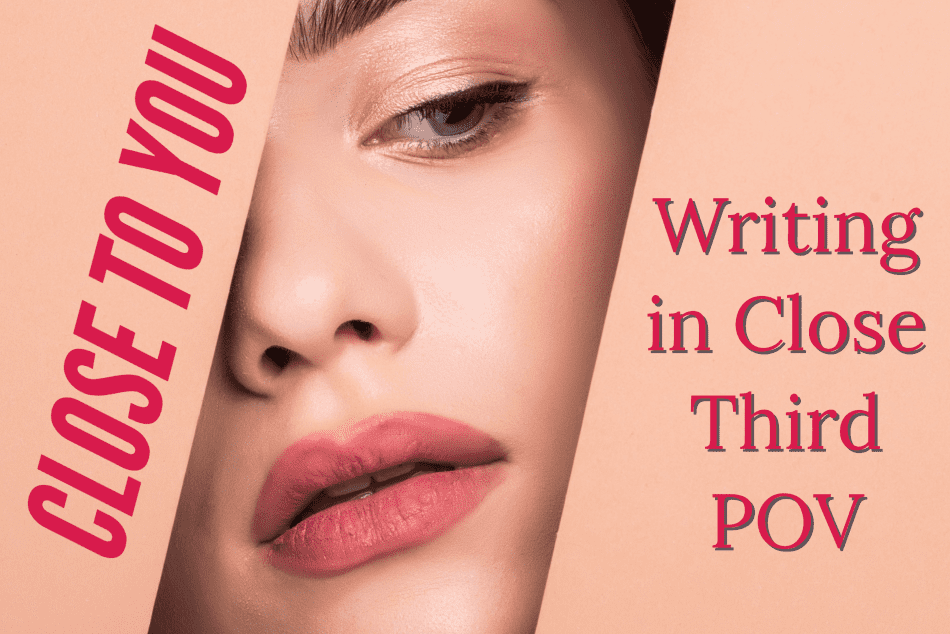by Brenda Copeland
When we talk about point of view (POV), we’re referring to first-, second-, and third person—the method of narration that brings the reader into the book. First person tends to be more intimate than any other point of view, providing the singular voice that is the I of the story.
With second person POV, I becomes you, transforming the reader into a de facto character. There’s an energy and immediacy in this approach, as if the narrator has a direct relationship with the reader. (There’s also an opportunity to annoy your reader, so use it sparingly.)
A third person narrative, identified by the pronouns he, she, and they, can provide a birds-eye view of the story and its characters. Third person POV brings with it notions of objectivity, a seemingly neutral stance that is impossible in first- and second-person narratives.
The third-person omniscient narrator comes with an air of authority. She does, after all, know all, see all, tell all. But contemporary readers may not respond naturally to authority, nor to the distance that can come with it. So how to bridge that gap? How to offer the sweeping POV that third person provides while bringing the reader to your characters?
A Close Third POV—that’s how.
A close third narrator retains the natural omniscience of a third person POV but shifts the angle from which the story is told. No longer impartial or static, the close third voice leans towards a particular character so that the reader can see a situation through that character’s eyes.
Because the close third tilts the narrative to the character’s perspective, the voice is less of a fence sitter and more of an invested observer, someone who is privy to the character’s innermost thoughts and desires.
In Alice Munro’s short story Hateship, Friendship, Courtship, Loveship, Marriage, the close third gives us a glimpse into the lives of six characters, with a special focus on Johanna, a dour young woman who is leaving town for what she hopes will be a new life of marriage and friendship. We first meet Johanna through the eyes of the station agent, who, the narrator tells us, “often tried a little teasing with women, especially the plain ones who seem to appreciate it.” That brief mention is provided in the narrative (not dialogue), so it’s the narrator who is speaking. But it’s a narrator who is so close to the character that it’s hard to tell them apart. And that’s the point of a close third POV. Filtered through the eyes of the male character, this comment tells us something about the station agent’s attitude, Johanna’s appearance, and the narrow world in which they both live. It’s a lot for one little sentence to live up to. But does it ever.
Still on the first page, Munro gives us this glorious sentence: “Her teeth were crowded to the front of her mouth, as if ready for an argument.” This ingenious line is intensely satisfying for the way in which it provides a physical description of Johanna and reveals not just the station agent’s disdain, but the contentious relationship developing between the two. Only a close third can do that.
As in all of Alice Munro’s stories, this one builds slowly. It will be a great many pages before the reader learns how Johanna came to arrive at her present circumstances, and why she wants to change them. But in Munro’s world, a slow build of story rests on a strong foundation of character. As the first few pages unfold, the reader doesn’t know anything of Johanna’s plans, only that she wants to ship some furniture across country. And yet, while we may not know what she wants, there are things we do know, mainly that she is practical and plain. These qualities are central to the plot of this short story. And because they are central, they are built on and magnified in the next scene when Johanna looks in the window of “Milady’s,” a fashionable dress shop in town. The narrator does not draw attention to the act of looking, as that would be contrary to a close third POV. Instead, she simply puts Johanna in front of the shop with the “gaudy paper maple leaves … scattered round the mannequins’ feet.” The reader is meant to understand that “gaudy” is Johanna’s word, one that contains judgment, and not just a little.
In general, to get more of a close third, and thereby strengthen the connection between your characters and the reader, consider taking out a great many of the words that form a barrier between not just the reader and the action, but between the reader and the character.
Barrier words:
- he saw
- he watched
- he decided
- he realized
- he noticed
- she thought
- she remembered
- she recalled
- she thought
- she decided
- she knew
The good news is, once you remove these barrier words, you don’t have to replace them with anything. Just let the sentence stand on its own. Here, for example, the sentence, “She noticed her mother was angry,” can be replaced with the more direct, “Her mother was angry.” Remove the obstacle of “she noticed,” and you get a stronger, more energetic sentence that brings the reader closer to the characters.
This sample paragraph shows the accumulated effects of a close third:
Original: She examined the kitchen with a keen eye. It was clean, but those tea towels hanging on the stove—she couldn’t remember how long they had been there. Betty thought they should be replaced immediately. She made a trip to Sears to pick up new tea towels. She decided on a plain blue with white piping.
Revised: She examined the kitchen with a keen eye. It was clean, but those tea towels hanging on the stove—how long had they been there? They would need to be replaced immediately. She made a trip to Sears to pick up new ones. Plain blue with white piping.
Next time you’re writing in third person, see what happens when you edge your narrative towards a close third. This powerful point of view will have a bearing on all aspects of your novel. Not just the voice in which your story is told, but the angle from which the story unfolds.
The choices the narrator makes—what he decides to tell us, what he decides to omit, the language he uses to describe each character and convey each action—these choices don’t just affect the story, they are the angle from which the story is told. In many ways, they are the story itself.
Note: LitHub has links to twenty-five Alice Munro stories you can read online right now. Alas, Hateship, Friendship, Courtship, Loveship, Marriage is not among them. But I feel safe in saying that any Alice Munro story is worth reading.
 Brenda Copeland is an editor with more than twenty years’ experience at the big five publishers. She served for eleven years as an adjunct professor in the graduate publishing program at NYU, and now teaches at Drexel University’s low residency MFA in Creative Writing. Throughout her career, Brenda has published a robust list of fiction and non-fiction, quality books with strong commercial appeal. As an independent editor, she works closely with authors through all stages of the writing and publication process, helping them reach their creative potential.
Brenda Copeland is an editor with more than twenty years’ experience at the big five publishers. She served for eleven years as an adjunct professor in the graduate publishing program at NYU, and now teaches at Drexel University’s low residency MFA in Creative Writing. Throughout her career, Brenda has published a robust list of fiction and non-fiction, quality books with strong commercial appeal. As an independent editor, she works closely with authors through all stages of the writing and publication process, helping them reach their creative potential.





